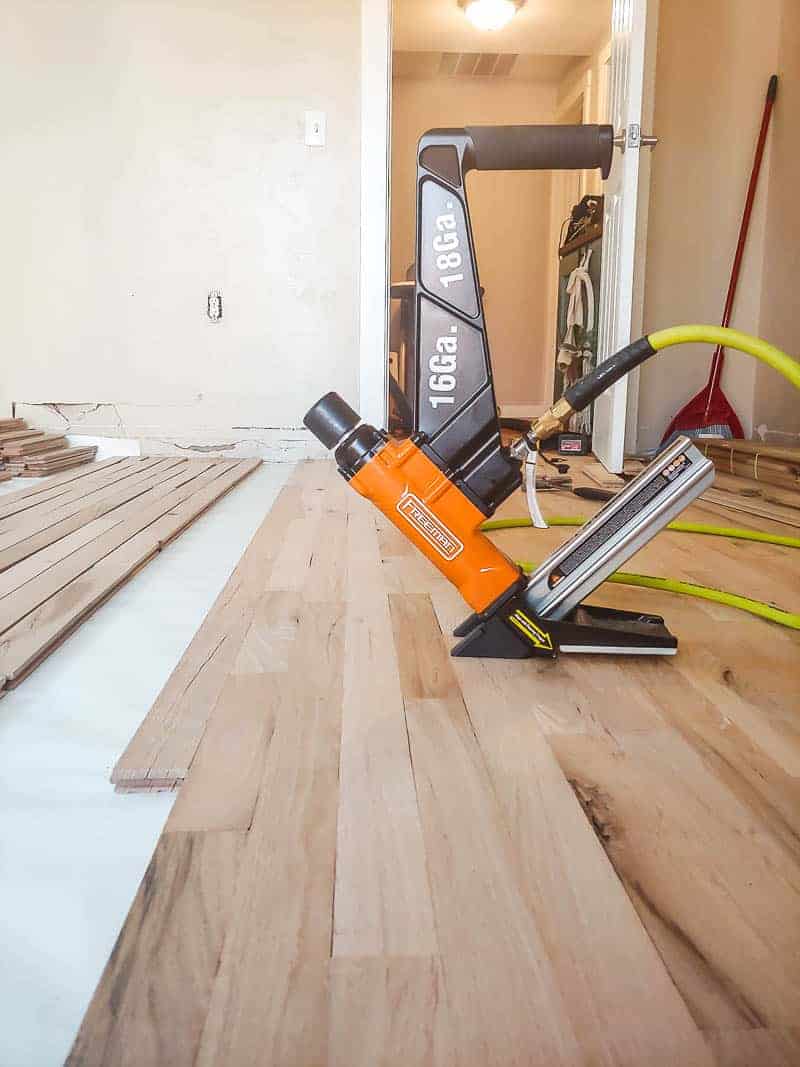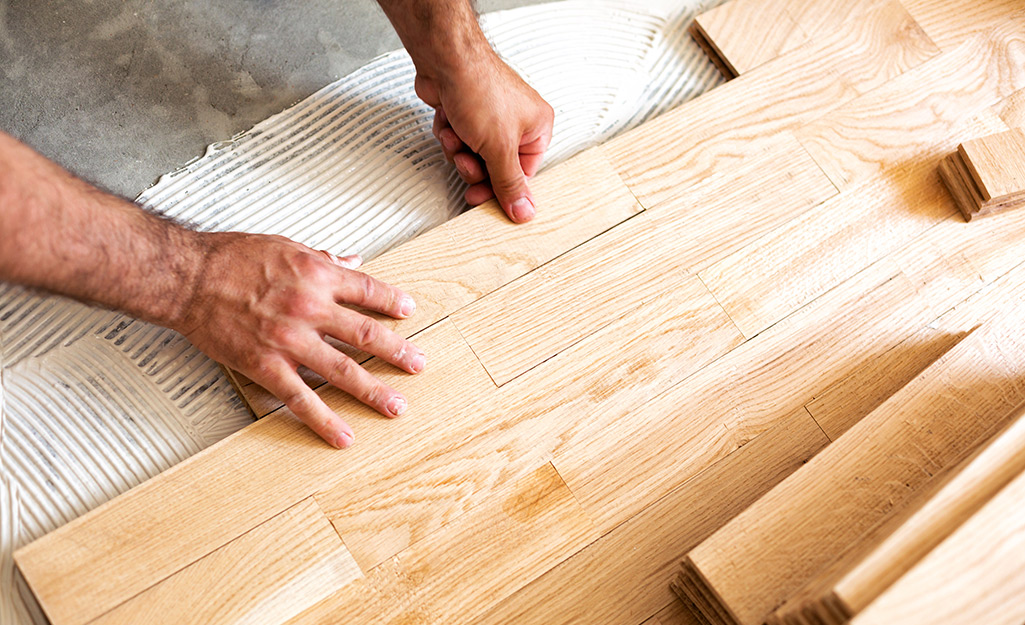The Benefits and Drawbacks of Setting Up Wood Flooring in Your Living Areas
When considering the installment of hardwood floor covering in your living rooms, it's crucial to weigh both its benefits and downsides. This type of floor covering uses exceptional visual allure and can considerably enhance residential property value, thanks to its timeless sophistication and compatibility with various interior designs. Understanding these variables is crucial before making an educated choice on whether wood floor covering is the ideal selection for your home.
Visual Appeal
Hardwood floor covering is extensively commemorated for its visual allure, typically taken into consideration a timeless choice that boosts the visual style of any interior area. The all-natural charm and warmth of hardwood can elevate the total ambiance, making it an eye-catching option for home owners and designers alike. Its versatile nature permits it to flawlessly blend with numerous building designs, from standard and classic to contemporary and modern.
The variety of wood types, stains, and surfaces readily available offers ample customization opportunities. Choices such as oak, maple, cherry, and walnut each offer distinct grain patterns and shades, catering to diverse design choices. The capability to pick between various slab widths and installment patterns, such as herringbone or diagonal layouts, adds to the layout versatility.
One more considerable benefit is hardwood's ability to age gracefully. Over time, it can develop a rich patina that includes personality and charm to the space. This aging procedure often enhances its attraction, making it a popular attribute in both new building and constructions and restoration tasks. In essence, wood floor covering not only adds to a prompt aesthetic influence but likewise remains to use aesthetic advantages as it matures.

Sturdiness and Long Life
In enhancement to its remarkable visual allure, the enduring nature of hardwood flooring is an additional engaging reason for its prevalent appeal. Renowned for its robustness, wood flooring can endure substantial foot traffic and maintain its structural stability for decades. Unlike other floor covering options that may degrade or reveal indicators of wear relatively rapidly, wood possesses an inherent stamina that makes it especially resistant.
One of the crucial features contributing to the long life of wood flooring is its resistance to day-to-day wear and tear. Premium hardwood varieties, such as cherry, maple, and oak, deal remarkable toughness, making them ideal for high-traffic locations within a home.
Additionally, wood flooring has a tendency to age with dignity, creating an abundant patina that enhances its character gradually. This aging process not only contributes to its appeal yet likewise vouches for its lasting nature. Subsequently, buying hardwood floor covering is typically deemed a long-lasting commitment that can add worth to a residential or commercial property while giving long-lasting elegance and functionality.
Upkeep Requirements
Keeping wood flooring, while normally straightforward, calls for a thoughtful and regular strategy to preserve its sophistication and toughness. Normal maintenance consists of sweeping or vacuuming to eliminate dust and particles that can trigger scratches. It's suggested to make use of a soft-bristled mop or a vacuum without a beater bar to decrease prospective damage.
Spills ought to be addressed without delay to stop dampness from permeating right into the timber and causing bending or my blog discoloration. Making use of a moist, not damp, mop for cleansing is vital, as too much water can be destructive. Utilizing a hardwood floor cleaner specifically designed for timber surfaces can improve the floor's natural radiance without leaving residue.
Periodic refinishing is another critical facet of maintenance. With time, the surface can put on down, leaving the wood at risk to damages. Refinishing entails fining sand down the top layer and applying a brand-new coat of coating, which can bring back the flooring's look and extend its lifespan.
Protective procedures, such as using furniture pads and placing carpets in high-traffic locations, can reduce wear and tear. In addition, maintaining steady indoor moisture levels aids stop wood from broadening or getting exceedingly. Adhering to these maintenance techniques makes sure that wood flooring continues to be a classic and resilient selection for living spaces.
Price Considerations
When evaluating the price considerations of installing hardwood floor covering, it is vital to account for both first costs and long-term monetary implications. The first outlay for hardwood floor covering can be considerable, particularly when selecting high-quality timber or exotic types.
However, hardwood flooring uses beneficial long-lasting economic benefits that might offset the first financial investment. Appropriately preserved wood can last for years, minimizing the demand for regular substitutes contrasted to other floor covering choices.
In addition, wood flooring is relatively simple to repair (hardwood floors). Specific planks can be fined sand and redecorated several times, which can prolong the life of the floor covering and lower long-lasting upkeep costs. Therefore, while the upfront prices can be high, the enduring straight from the source value and long life frequently make wood an economically audio financial investment in time
Moisture Susceptability
While hardwood floor covering supplies notable financial advantages, it is necessary to consider its susceptibility to moisture-related issues. Wood, being an all-natural product, is prone to broadening and contracting based upon the moisture degrees in the environment. Extreme moisture can create the timber to swell, warp, and even create mold and mildew, therefore jeopardizing both its aesthetic appeal and structural stability.
In rooms like kitchen areas, basements, or bathrooms where wetness degrees are normally greater, wood floor covering might not be one of the most sensible choice. Also small go to this site spills, otherwise without delay cleaned up, can seep into the joints and create long-term damages. Seasonal adjustments can likewise influence hardwood, bring about gaps during completely dry durations and buckling when humidity climbs.
To minimize these risks, property owners can take into consideration engineered wood, which offers much better resistance to dampness because of its multi-layer building and construction. In addition, preserving a constant indoor environment with the help of dehumidifiers or humidifiers can aid protect the condition of wood floors. Sealing the surface area with safety coatings likewise provides an added layer of protection against moisture seepage.
Understanding the capacity for moisture-related troubles is important in making an informed choice regarding wood floor covering. Correct treatment and safety nets can dramatically enhance its durability and performance in living rooms.

Final Thought
In conclusion, setting up hardwood flooring in living rooms presents a mix of benefits and challenges. Regardless of these downsides, the financial investment in hardwood flooring typically pays rewards in both capability and building worth, making it a prominent choice for critical property owners.
When considering the setup of hardwood floor covering in your living areas, it's vital to consider both its downsides and advantages.Hardwood floor covering is commonly celebrated for its visual allure, frequently considered a classic option that improves the aesthetic sophistication of any type of interior room. Adhering to these maintenance practices ensures that hardwood floor covering remains a sturdy and classic choice for living areas.
In conclusion, mounting hardwood floor covering in living spaces presents a blend of difficulties and benefits. Despite these downsides, the investment in wood flooring often pays dividends in both capability and property value, making it a prominent selection for critical house owners.